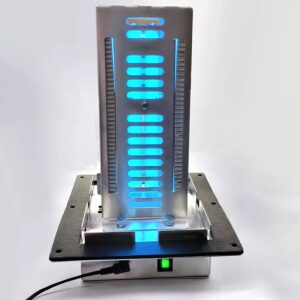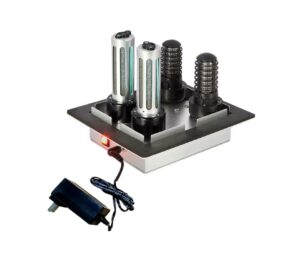
Breakfast should be a peaceful moment—a plate of bacon and eggs, sunlight streaming through the window, illuminating the swirling steam of freshly brewed coffee. But those same rays also reveal unidentifiable objects hovering in the air, as if the laws of gravity do not apply to them, turning an otherwise cozy scene into something unsettling. Add to that my roommate’s dog shedding like it’s trying to create a second dog out of fur. Let’s not forget allergy season, when my nose runs so much that staying hydrated is often a losing battle. Coming home hours later, still greeted by the lingering oily smell of breakfast, is the final straw. Fixing my home’s air feels less like a luxury and more like a necessity.
During my recent travels, I’ve been spending my downtime obsessively researching air filtration technologies. Because what says “vacation” more than sitting around, thinking about the unidentifiable particles floating in my kitchen thousands of kilometres away? While others explore local attractions and soak up the culture, I’m Googling Photocatalytic Oxidation (PCO) and Dielectric Barrier Discharge (DBD) and plasma ionization, questioning how my idea of fun came to involve microscopic air contaminants. What started as casual reading quickly spiraled into a full-blown obsession, as I realized these technologies might be the key to solving the air quality problem in my home—and an essential upgrade for my mycology cultivation hobbies.

Photocatalytic Oxidation (PCO)

Dielectric Barrier Discharge (DBD)
What Are PCO and DBD?
Photocatalytic Oxidation (PCO) and Dielectric Barrier Discharge (DBD) plasma ionization are the heroes my indoor air didn’t know it needed. If you’re picturing futuristic tech straight out of a sci-fi movie—think invisible nanobots waging war on pollutants and pathogens—you’re not far off.
PCO uses UV light and a catalyst to create reactive oxygen species that hunt down and obliterate VOCs, odors, and pathogens. Think of it as the Liam Neeson of air purification: it has a very particular set of skills, and it will find those VOCs and destroy them.
DBD creates a plasma field that produces ions—tiny air ninjas that break down contaminants and freshen the air. But the best part? These ions don’t just neutralize the bad stuff passing through the system. They infiltrate every nook, cranny, and dark little crevice of your home to tackle hidden pollutants and odors. It’s like having an invisible cleanup crew working tirelessly in the background.
Potential Health Benefits of Ions: Science or Just Placebo?
Negative ions, those tiny particles found in nature near waterfalls, forests, and fresh mountain air, have been linked to various health benefits. Some studies suggest they can enhance mood, improve sleep, and reduce fatigue. While the science is still inconclusive, with some studies showing minimal effects, the idea of breathing in air that feels cleaner and more refreshing is appealing enough for me to give it a try.
Even if the science isn’t airtight, I’m not going to say no to the chance of a little extra “fresh air magic” in my life.
My Multi-Stage Air Purification Masterpiece
Because over-engineering my air is now my latest obsession, I’ve created a multi-layered purification system designed to tackle everything from dust to microscopic pollutants. Each stage serves a specific purpose:
• Pre-Filter (Furnace Filter): Catches dust, pet hair, and larger particles, handling the visible stuff that’s easy to clean but important to remove.
• Carbon Filter: Absorbs volatile organic compounds (VOCs), odors, and other chemical contaminants, making the air smell cleaner and feel fresher.
• HEPA or MERV 16 Filter: Targets ultrafine particles like pollen, mold spores, and microplastics, because the invisible threats deserve attention too.
• PCO and DBD Elements: The final defense—these advanced technologies neutralize any remaining pathogens, VOCs, and odors, while releasing ions to keep the rest of the airspace clean.
Example Airflow Configuration
If you’re wondering how this all works together (and why I’m so proud of it), here’s the breakdown:
• Air Intake → Pre-Filter → Carbon Filter → HEPA/MERV 16 Filter → PCO + DBD Elements → Air Outlet
It’s like an assembly line for air, systematically removing everything you don’t want to breathe. Instead of creating something new, this system dismantles pollutants at every stage, ensuring that what you inhale is as clean and fresh as possible. I will probably incorporate an Energy Recovery Ventilation (ERV) system in the future—a device that exchanges stale indoor air with fresh outdoor air while transferring heat and moisture between them, providing an energy-efficient way to maintain air quality, temperature, and humidity levels.
Why I’m Doing This
If I’m going to invest time and effort into eating healthy meals, going to the gym, and optimizing every other aspect of my health, the air I breathe shouldn’t be working against me. As a lifelong Star Trek fan, this project feels like my small step toward living on the USS Enterprise—combining a touch of futuristic inspiration with a practical commitment to better living.
